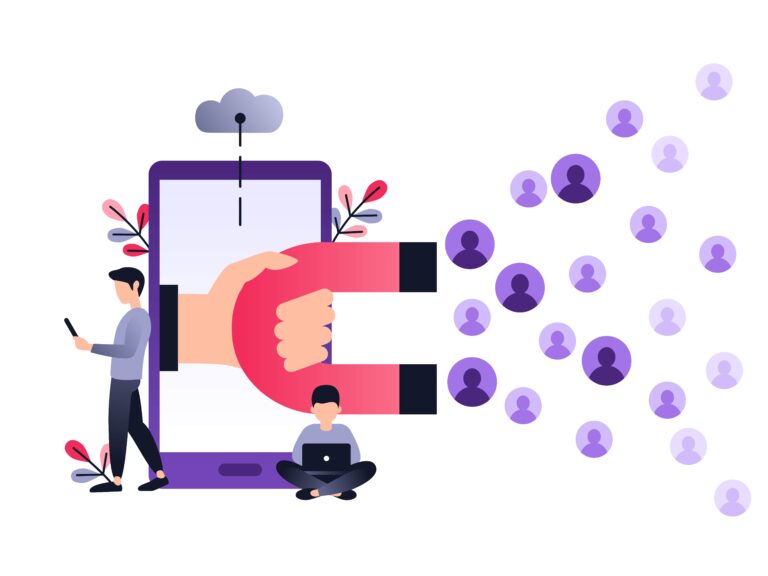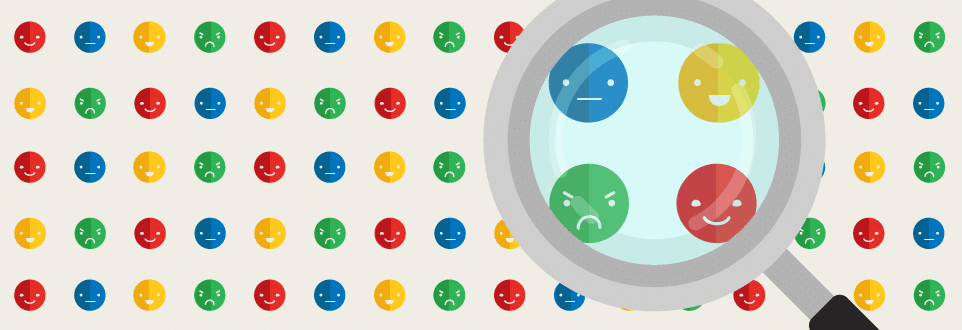In the ever-evolving business landscape, innovative tools have become paramount for success, with Generative Artificial Intelligence (AI) emerging as a game-changer. According to a 2023 study of U.S. marketers, 73% of the 1,000 respondents reported leveraging generative artificial intelligence tools.
Understanding the potential of Generative AI is crucial for today’s business leaders as it empowers them to create captivating content, personalized marketing campaigns, and streamlined processes. Embracing this technology unlocks new levels of creativity, efficiency, and competitive advantage in today’s dynamic market.
How Does Generative AI Work?
Generative AI, a subset of artificial intelligence, employs a unique approach to create content that mimics human creativity. At its core, Generative AI functions through two primary models: Variational Autoencoders (VAEs) and Generative Adversarial Networks (GANs).
Variational Autoencoders (VAEs): VAEs are neural networks used for unsupervised learning tasks, particularly image and text generation. The process begins with an encoder that compresses input data, like images or text, into a latent space representation or a compressed code. This code is then passed to the decoder, which attempts to reconstruct the original input based on the provided latent representation. The VAE model learns by comparing the input with the reconstructed output and adjusts its parameters to minimize the difference, effectively learning to generate similar but new content.
Generative Adversarial Networks (GANs): GANs consist of two competing neural networks—the generator and the discriminator. The generator is responsible for creating new data instances, such as images or audio, while the discriminator’s role is to distinguish between real and generated data. The generator keeps improving by generating content to deceive the discriminator, while the discriminator aims to enhance its ability to differentiate real from fake data. Through this adversarial process, GANs achieve remarkable results in generating realistic and high-quality content, as demonstrated in deepfake technology, art generation, and more.
Examples of Generative AI Models
Generative AI models have significantly advanced in recent years, producing impressive and diverse applications. Here are some prominent examples:
- GPT-3 (ChatGPT): Developed by OpenAI, the Generative Pre-trained Transformer 3 (GPT-3) is one of the most famous language models. ChatGPT is a variant of GPT-3 designed explicitly for interactive conversations. With 175 billion parameters, it can generate coherent and contextually relevant responses across various topics, making it a powerful tool for chatbots, content generation, and virtual assistants.
- BERT: Bidirectional Encoder Representations from Transformers (BERT) is another significant language model created by Google. BERT’s unique architecture allows it to understand the context of words in a sentence by considering both left and right-side context. It excels in tasks like text classification, question-answering, and sentiment analysis.
- The image generation model called DALL-E, whichOpenAI created, is an impressive tool. It generates images from textual descriptions, showcasing a deep understanding of concepts and a capacity for artistic creativity. DALL-E has potential applications in design, art, and content creation.
- StyleGAN: Style Generative Adversarial Network (StyleGAN) is a popular GAN-based model for generating high-resolution and realistic images. It allows users to control the style and appearance of rendered images, making it helpful in creating art, fashion designs, and natural face generation.
- MuseNet: Developed by OpenAI, MuseNet is a music generation model capable of composing pieces in different genres and styles. It can produce original music, combining instruments and creating harmonies, revolutionizing music composition.
Generative AI vs. AI
Generative AI and AI are interconnected but distinct concepts. AI encompasses various techniques that enable machines to perform tasks requiring human-like intelligence, such as problem-solving, language processing, and pattern recognition. Generative AI, on the other hand, is a specific subset of AI focused on creating new content, like text, images, or music, through algorithms.
While AI aims to mimic human cognition, Generative AI’s primary goal is creative content generation, pushing the boundaries of innovation in areas like art, design, and personalized user experiences. In essence, Generative AI is an exciting frontier within the broader field of AI.
What are some of the use cases for Generative AI?
Generative AI has revolutionized diverse industries with its ability to unleash creativity and produce novel content. From art to healthcare and gaming to chatbots, Generative AI applications have extended far beyond expectations, propelling innovation and transforming user experiences.
Art and Creativity
Generative AI has opened new avenues for artistic expression, creating unique artworks, and pushing creative boundaries. Artists can collaborate with AI models like DALL-E and create surreal and imaginative pieces that captivate audiences with their originality.
Content Generation
Generative AI streamlines content creation across platforms, automating tasks like writing articles, product descriptions, or marketing materials. Language models such as GPT-3 can produce human-like text catering to various industries’ content needs.
Design and Fashion
Generative AI transforms design and fashion industries by generating novel patterns, textures, and styles. AI-driven design tools like StyleGAN allow designers to explore endless possibilities and create innovative fashion collections or stunning visual designs.
Healthcare
In healthcare, Generative AI assists in medical image analysis, drug discovery, and patient data synthesis. AI models help generate synthetic data for research, protect patient privacy, and accelerate the development of life-saving treatments.
Gaming and Virtual Reality
Generative AI enhances gaming experiences by creating dynamic environments, characters, and narratives. Game developers leverage AI-generated content to craft immersive worlds and unpredictable gameplay scenarios, captivating players in virtual realities.
Chatbots and Conversational AI
Generative AI powers advanced chatbots capable of interactive and contextually relevant conversations. Models like ChatGPT enhance customer support, offer personalized recommendations, and drive seamless human-machine interactions across various industries.
What Are The Benefits of Generative AI in Marketing?
 Content Production and Marketing Efforts
Content Production and Marketing Efforts
Generative AI streamlines content creation, automating the generation of blogs, social media posts, and product descriptions. It expedites marketing efforts, ensuring a consistent flow of engaging content to captivate the target audience and boost brand visibility.
Personalized and Relevant Marketing Campaigns
Generative AI analyzes vast amounts of customer data to deliver hyper-personalized marketing campaigns. By understanding individual preferences and behaviors, marketers can tailor messages, offers, and recommendations, driving higher conversion rates and customer satisfaction.
Enhanced Customer Experience
Generative AI enables advanced chatbots and conversational interfaces that offer real-time and contextually relevant customer interactions. These AI-driven interactions provide swift and accurate responses to inquiries, enhancing customer experience and fostering brand loyalty.
The Future of Generative AI in Marketing
With ongoing advancements in AI technology, one can expect even more sophisticated and creative content generation, enabling marketers to reach their target audiences with unparalleled personalized campaigns. Enhanced AI-powered chatbots will provide seamless and human-like interactions, elevating customer experiences and driving brand loyalty.
Furthermore, Generative AI’s integration with data analytics and customer insights will lead to hyper-targeted marketing strategies, optimizing marketing spend and maximizing ROI. As Generative AI becomes more accessible and refined, it will reshape the marketing landscape, fostering innovation and revolutionizing how businesses connect with their customers.
What are the limitations of generative AI?
Generative AI, while impressive, has certain limitations. One key challenge is maintaining control over the generated content, as AI models may produce biased, inappropriate, or misleading outputs. Ensuring the ethical and responsible use of Generative AI remains a concern. Additionally, generating high-quality content requires substantial computational resources, making it resource-intensive and time-consuming. Models may also struggle with understanding complex contexts or producing coherent long-form content. Moreover, Generative AI heavily relies on the data it is trained on, and any biases or limitations in the training data can be reflected in the generated outputs. Addressing these limitations is essential to harness the full potential of Generative AI responsibly and effectively.
Generative AI has emerged as a powerful tool with vast potential, transforming industries and revolutionizing content creation. From art and marketing to healthcare and gaming, its impact has been remarkable. Despite its limitations, as the technology continues to advance, responsible and strategic use of Generative AI promises to drive innovation, enhance customer experiences, and shape a brighter future across diverse domains.
Frequently Asked Questions
How do you train a generative AI model?
To train a generative AI model, you need a large dataset of examples, choose a suitable architecture (e.g., GAN or VAE), define evaluation metrics, and optimize the model through iterative training to generate desired outputs.
Will AI ever gain consciousness?
Currently, there is no evidence to suggest AI can gain consciousness. AI is a tool humans design to execute tasks based on patterns and data, lacking self-awareness or subjective experience.
How could generative AI replace jobs?
Generative AI can automate content creation, design, and customer interactions, potentially displacing jobs in creative industries, customer service, and certain data-related tasks.
How generative AI is changing the world?
Generative AI is revolutionizing industries, unleashing creativity, automating tasks, and personalizing experiences, driving profound changes across the world.




